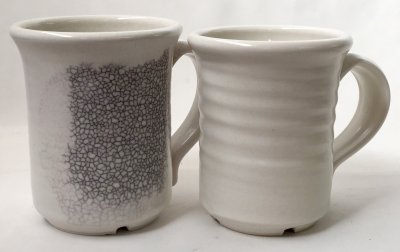High temperatures may be used or low temperatures.
Ceramic oxidation fire definition.
Fire is an oxidation process that happens very fast so that light heat and sound are released often with enough force and majesty to justify the ancients reverence the sudden release of energy causes temperatures to rise sometimes by thousands of degrees.
This is the clean burning efficient blue flame which is why easy temperature gains are synonymous with oxidation atmospheres.
Cone 06 10 they reduce the kiln for a period for body and glaze reductions.
Ch 3 ch 2 oh ch 3 cho ethanol is considered oxidized because it loses hydrogen.
Reduction vs oxidation firing.
There are two primary methods most commonly referred to as oxidation and reduction firing.
With access to enough oxygen to efficiently burn your fuel you are almost exclusively producing water vapor and co2 which will cause oxidation of your ceramic surfaces.
Look it up now.
Oxidation firing definition oxidation firing is a technique used to oxidise ceramic materials.
Oxidation and reduction in terms of firing schedules.
Oxidation reduction salt wood raku oxidation firing is typically done in an electric kiln but can also be done in a gas kiln.
There are many ways to fire your clay.
According to this definition oxidation is the loss of hydrogen while reduction is the gain of hydrogen.
For example according to this definition when ethanol is oxidized into ethanal.
Artists experiment and develop new firing techniques and methods all the time.
The defining difference between a fire and your half eaten apple is speed.
Oxygen is free to interact with the glazes when firing.
The difference between oxidation and reduction firing.
Reversing the equation ethanal can be reduced by adding hydrogen to it to.
In fact because almost all natural clays contain iron reduction firing normally gives completely different clay surface effects than oxidation.
Many people fire their gas kilns up in oxidation but at two places in the ramp e g.
With fuel burning kilns however care must be taken to ensure that the kiln does not go into reduction until the latter part of the firing usually the last half hour to the last hour and a half.

